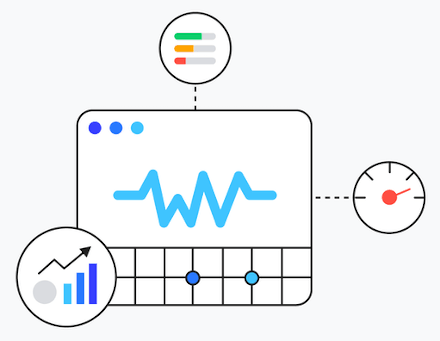What Are Core Web Vitals? 4 Standards That Matter

Core web vitals are Google standards that measure website user experience. The standards are First Contentful Paint, Largest Contentful Paint, First Input Delay and Cumulative Layout Shift.
The standard names are not intuitive, but the ideas behind them are important methods for increasing search engine optimization (SEO).
The methods that Google uses to track the core web vitals are meant to imitate real-world experience for site visitors.
This recent innovation from Google is an advancement on the importance of website speed. Speed matters because website visitors are more likely to leave a site and even not come back if it loads too slowly. Google has claimed that even a difference of only 300 milliseconds matters in how visitors perceive website speed.
Google cares about website speed for two reasons that impact search rankings and search engine optimization:
Speed reflects the quality of its search engine rankings. If a site ranked No. 1 in search results is too slow, Google visitors are less likely to trust the rankings and may go to other search engines.
It also impacts advertising. Google in particular cares about sites that display ads from its AdSense network. If people leave the site quickly, they are less likely to click on the ads, which reduces Google revenue (and the website’s revenue).
How do the four Core Web Vitals work and what do they measure? Despite the awkward names, their purpose is simple.
Where to Find Core Web Vitals
Website publishers can find the numbers in the well-known PageSpeed Insights report. Use that term in any search engine to find the report. Enter a URL for the results. The report gives a score for both the mobile and desktop versions of a website.
Another option is websites such as GTmetrix. It will provide even more detail about page load times.
Note that the reports show abbreviations for each standard: LCP, FID and CLS.
The Four Core Web Vitals
First Contentful Paint
First Contentful Paint is a loading measurement. It tracks how quickly the first content element appears on a page. Usually that element is the HTML code including the text content of the page. On a fast website, visitors won’t notice the speed difference between that file and other files that follow it.
Largest Contentful Paint
Largest Contentful Paint is another loading measurement. It measures the loading performance of the largest block of content on a page, such as an image. Google recommends that LCP should take place within 2.5 seconds of when the page first starts loading. It’s another reason why websites should optimize their images for fast loading. They also should avoid loading too many images on a page.
First Input Delay
First Input Delay is an interactivity measurement. Google recommends an FID of less than 100 milliseconds. It measures how quickly a site visitor interacts with a page such as clicking on a link or an ad. It also reflects how soon their browser has downloaded enough information that they are even able to click on a link, advertisement or button or how soon they can fill out a form.
Cumulative Layout Shift
Cumulative Layout Shift (CLS) is a layout measurement. It judges the visual stability of a page and whether elements should during the loading of it. Google recommends a CLS of less than 0.1.
Sites that display advertising will usually have lower scores than sites that don’t display advertising. Ads contain images and usually javascripts as well that delay page loading.

 Promise Media offers online business tips and best practices for content-rich websites.
Promise Media offers online business tips and best practices for content-rich websites.